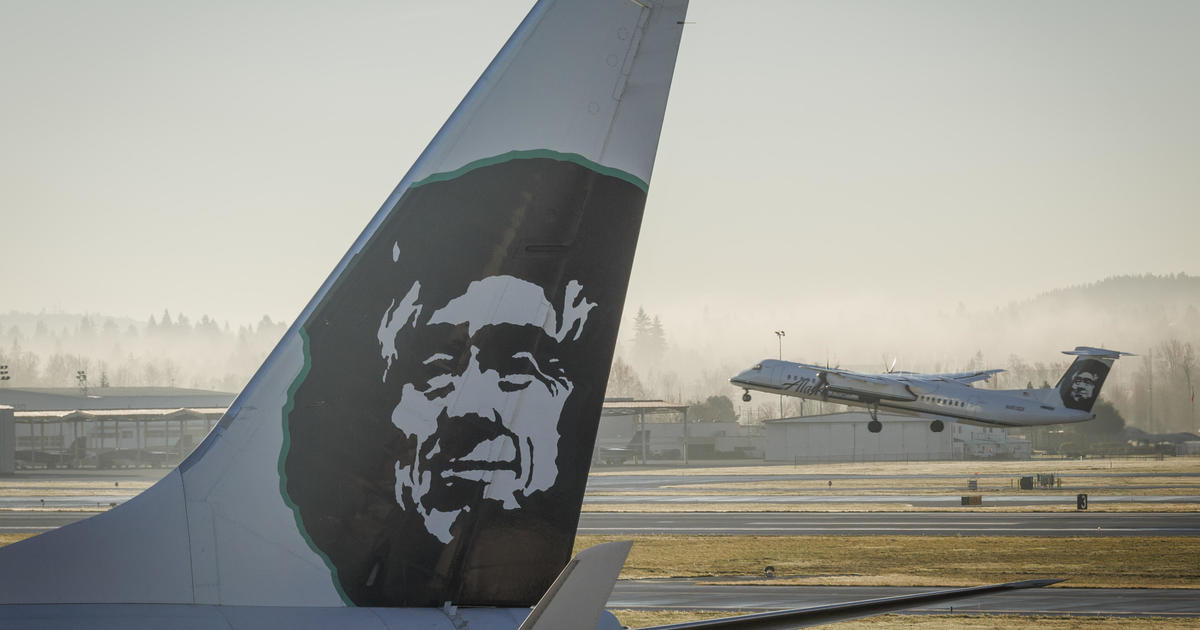Huge Bay Area Crowds Cheer Shuttle Endeavour Flyover
SAN FRANCISCO (CBS SF) - Hundreds of people gathered at San Francisco's Crissy Field and in the Marin Headlands Friday morning to watch the Space Shuttle Endeavour make a pair of low-altitude passes near the Golden Gate Bridge.
The shuttle, which was on its final flight before heading to a permanent display at the California Science Center, took off earlier just north of Los Angeles. An expected Bay Area arrival of 9:30 a.m. was delayed significantly. The craft arrived over the East Bay shortly after 10 a.m. where it was cheered from the Chabot Space and Science Center.
RELATED CONTENT:
>>Full CBS 5 Special Report
>>Endeavour Flyover Photo Gallery
People could be seen on the rooftops of buildings in San Francisco's Financial District as Endeavour made two passes through the Golden Gate and above the city, heading south toward Moffett Field around 10:30 a.m. The shuttle headed south to make a pass as low as 1,500 feet above the NASA Ames Research Center at 10:38 a.m, before departing toward Monterey and its final home in Southern California.
The shuttle touched down at Los Angeles International Airport around 12:30, following a roughly 5-hour tour of the state.
Richard Davis, 61, of Petaluma, was one of the hundreds of adults and children—many carrying cameras—who were out at Crissy Field to watch the flyover.
"It's a great display of engineering," Davis said.
He said he is a pilot who is nearing retirement age and that there is a shortage of younger pilots.
"Kids, after they see this, will say 'I want to do that,'" Davis said. "It's easy to dream when you see it."
KCBS Team Coverage of Endeavours Bay Area Fly-By:
The Endeavour, which piggybacked on a specially modified Boeing 747, took off from Edwards Air Force Base near Los Angeles.
Known as the baby shuttle, Endeavour was the last one built, replacing Challenger, which exploded during liftoff in 1986. NASA lost a second shuttle, Columbia, which broke apart during re-entry in 2003. A replacement was not built. Fourteen astronauts died in the accidents.
Endeavour flew 25 times, mostly to supply the International Space Station. It spent 299 days in space and circled Earth nearly 4,700 times, logging 123 million miles.
The space shuttle has deep roots in California: The main engines were manufactured in Los Angeles' San Fernando Valley. The heat shield tiles that protected the shuttle during re-entry were invented in Silicon Valley. The shuttle's "fly-by-wire" technology was developed in the Los Angeles suburb of Downey.
Shuttle parts from California and other plants around the country were shipped to Rockwell International's assembly factory in Palmdale near Edwards. For the early part of the shuttle program, landings occurred in the desert before switching to Florida. Edwards remained the backup landing site.
Endeavour is the second of three surviving shuttles bound for its retirement home. In April, Discovery landed at the Smithsonian Institution's annex in Virginia after victory laps around the White House, the Capitol and the Washington Monument.
Atlantis will remain in Florida and will be towed in November to the Kennedy Space Center's visitor center.
Enterprise, a prototype that flew in approach and landing tests but never went into space, sailed up the Hudson River by barge in June en route to the Intrepid Sea, Air & Space Museum.
After three decades of service, NASA permanently grounded the shuttles last year under a White House mandate to focus on destinations beyond low-Earth orbit with goals to land astronauts on an asteroid and eventually on Mars.
The shuttle's main job was hauling spare parts and cargo to the space station, which is near completion. Until private companies can provide regular taxi service to the giant orbiting lab, NASA is relying on Russian rockets.
NASA deeded Endeavour to the California Science Center last year. The estimated coast-to-coast shipping and handling costs is $28 million to be paid for by the science center. A final cost has not been calculated. NASA officials have said it didn't cost extra to fly over Tucson because it was on the way.
Endeavour will now undergo several weeks of preparations for its last mission: Inching through the streets of Los Angeles in early October to its museum home, a 12-mile crawl that required chopping down hundreds of trees and rerouting power lines.
For shuttle workers, it's a "bittersweet moment. The shuttle is finally retired and done. But for us, it's a great beginning of its next mission," said museum president Jeffrey Rudolph.
(Copyright 2012 by CBS San Francisco. All Rights Reserved. This material may not be published, broadcast, rewritten, or redistributed.)



